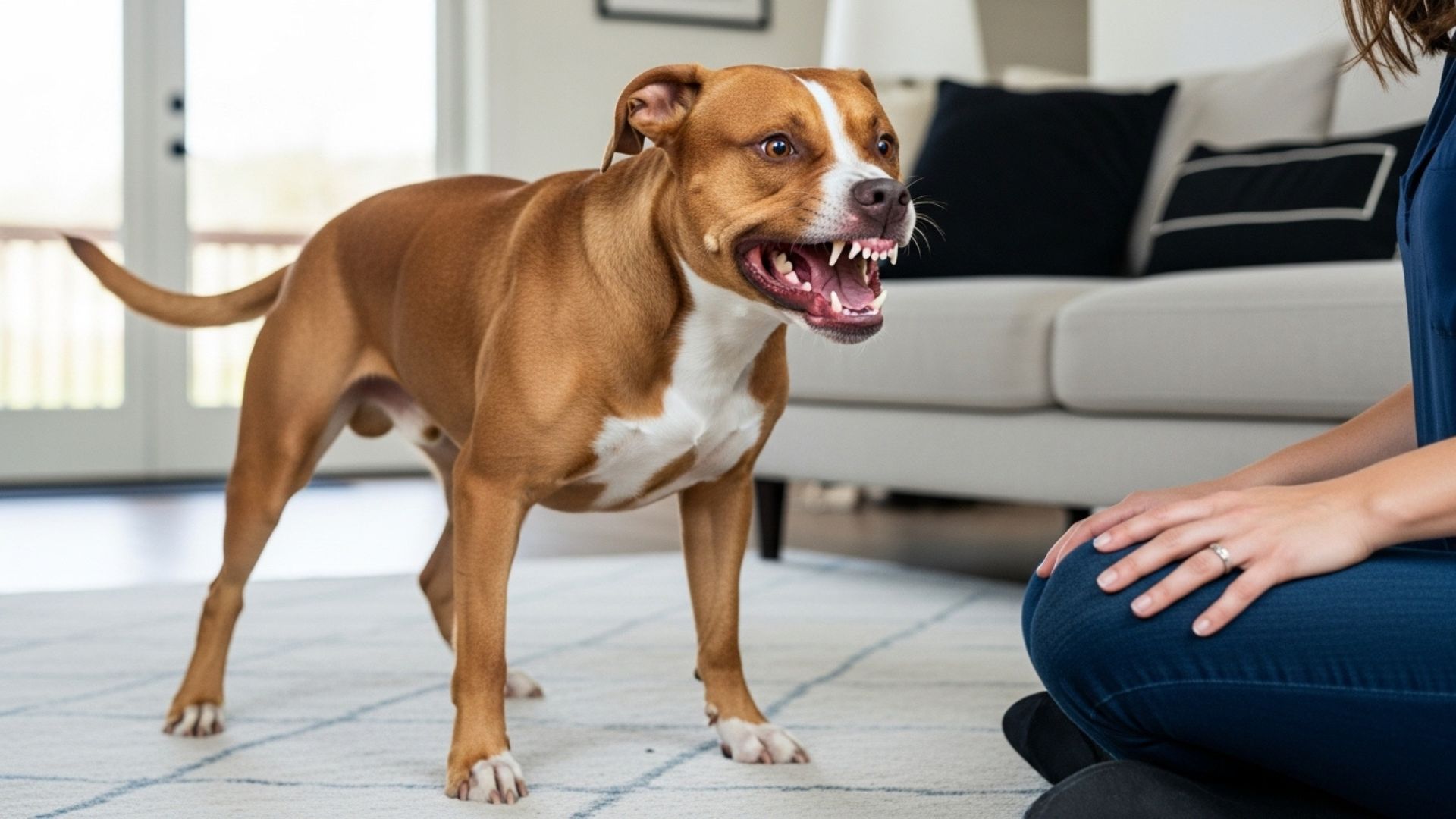Imagine walking down the street, seeing a dog with piercing eyes and a powerful stance. It might look loyal or majestic, but not every dog is as friendly as it seems. Some breeds have reputations for aggression or unpredictable behavior, making them far from ideal cuddle buddies.
That’s not to say these dogs are “bad” by nature—they just need experienced handlers and proper training to thrive safely. From muscular giants with a commanding presence to smaller dogs with fierce personalities, understanding which breeds carry potential risks is crucial for your safety.
Whether you’re a dog lover, a parent, or just someone who enjoys casual strolls in the park, knowing which dogs to admire from afar can prevent accidents and heartbreak. We’ll explore the aggressive dog breeds that are considered the most dangerous, unpack the reasons behind their reputations, and offer tips on how to safely coexist.
By the end, you’ll gain insight into the world of these high-risk dog breeds—without ever putting yourself in harm’s way.
Did You Know? Certain strong breeds aren’t just strong—they have bite forces exceeding 700 PSI! Admire from a distance unless you’re trained in handling powerful dogs safely.
Dangerous Dog Breeds You Should Never Pet
1. Pit Bull
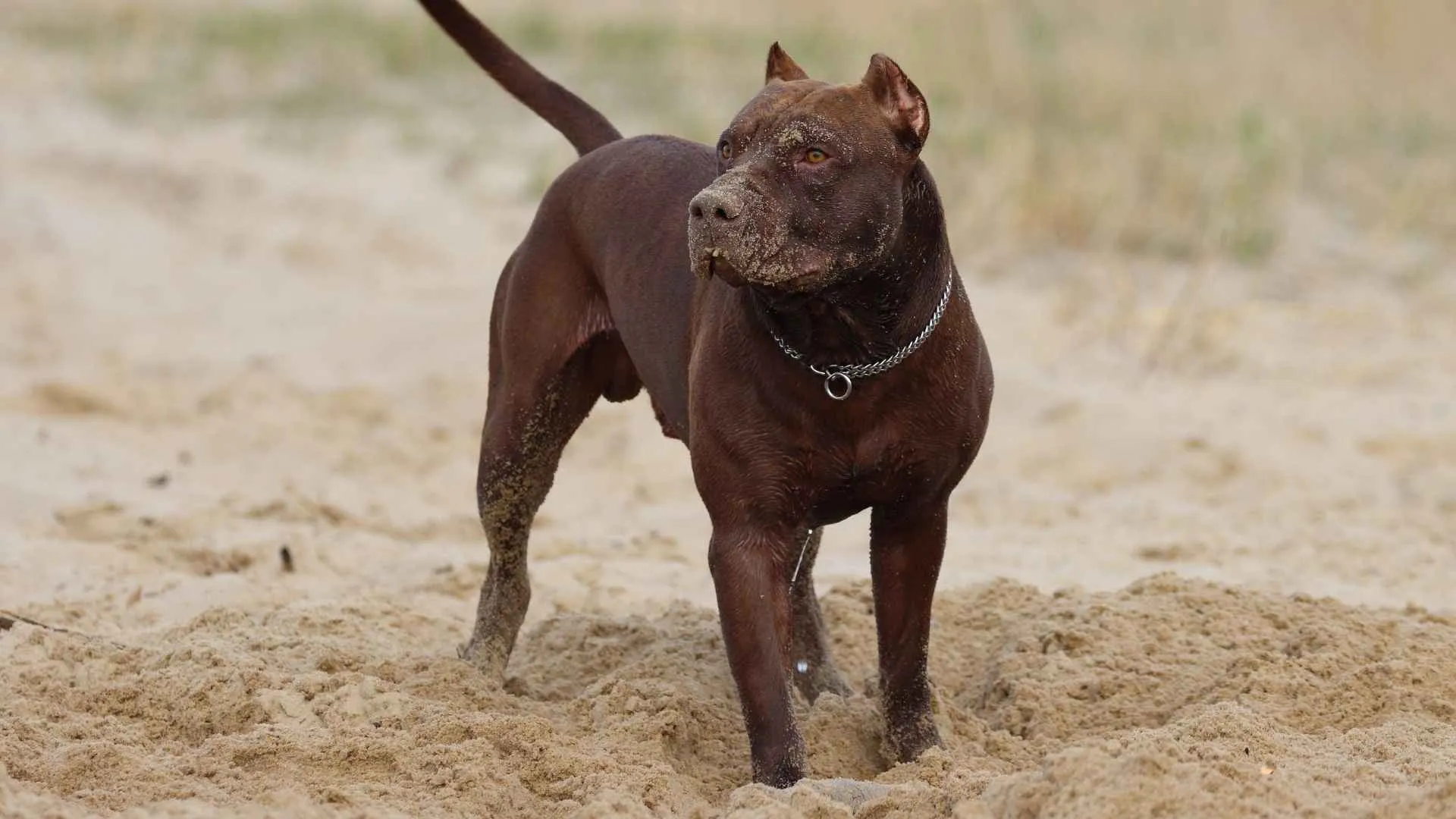
Average Bite Force: 235 PSI
American Pit Bull Terrier is basically the bodybuilders of the dog world — solid, strong, and surprisingly sweet. Imagine a furry tank with a goofy grin. Despite their “dangerous” reputation, many pit bulls are cuddle champions, loyal companions, and unapologetic lap dogs.
But here’s the plot twist: some pit bulls were originally bred as fighting dogs. Not because they hated other dogs, but because humans thought it was a great idea to make them fight for sport. (Spoiler: it wasn’t.)
Over generations, this selective breeding gave them powerful jaws, high pain tolerance, and a determination to finish what they start — traits that, in the wrong hands, can spell trouble.
Now, here’s the stat that raises eyebrows: these most dangerous breeds are responsible for about two-thirds of all fatal dog bites in the U.S., despite making up only 6% of the dog population. That’s like having one kid in class responsible for all the spitballs.

Many “pit bull attacks” are actually misidentified breeds (because anything with a square head gets labeled a pit). The ASPCA says early positive experiences — like playdates, new environments, and gentle introductions to other dogs — are key to keeping any doggo happy and well-adjusted.
Basically, the more friends your pup makes, the less likely they are to act out later. So if you raise your pit bull with kindness, consistency, and lots of peanut butter treats, you’ll probably end up with a big-hearted goofball instead of a biter.
2. Rottweiler
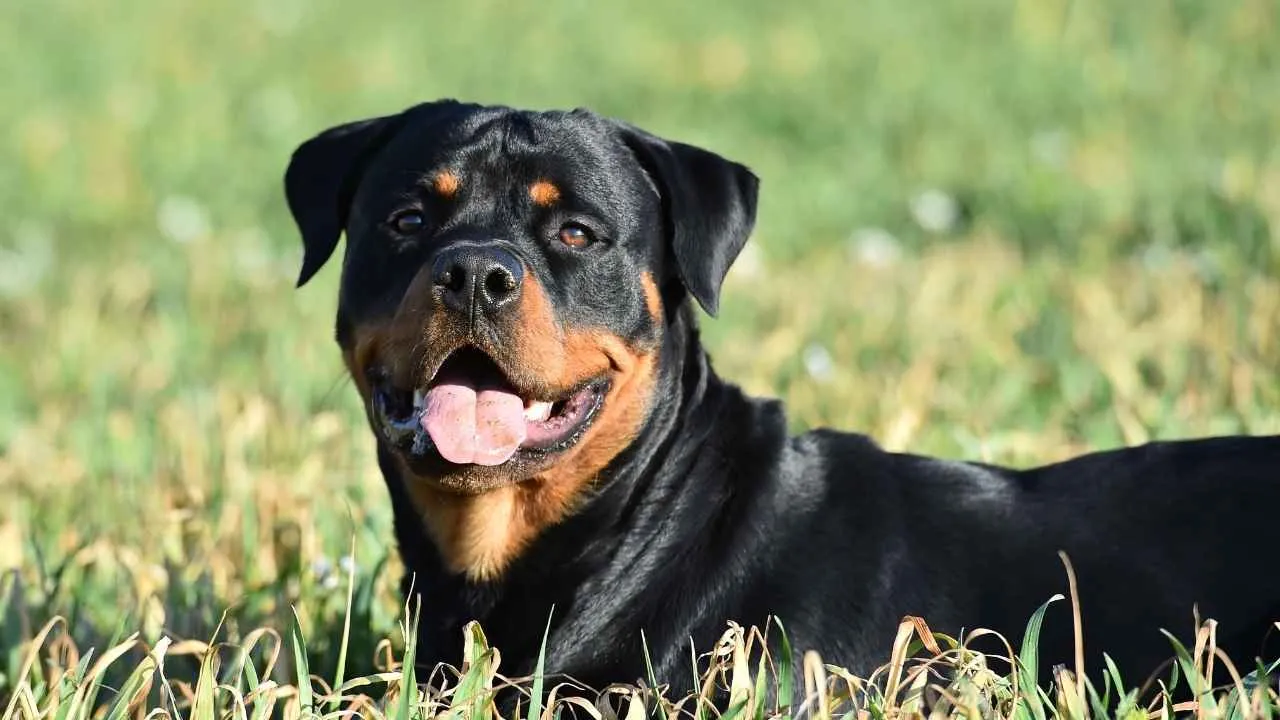
Average Bite Force: 328 PSI
Ah, the Rottweiler — a dog that looks like it could bench-press you, your car, and probably your entire neighborhood. But behind that muscular frame and stern expression is a surprisingly sweet soul who just wants to protect their people (and maybe chew your couch while they’re at it).
The Rottie’s story actually begins way back in Roman times, when these dogs worked as drovers — herding and guarding cattle during long treks across Europe. Think of them as the original four-legged cowboys.
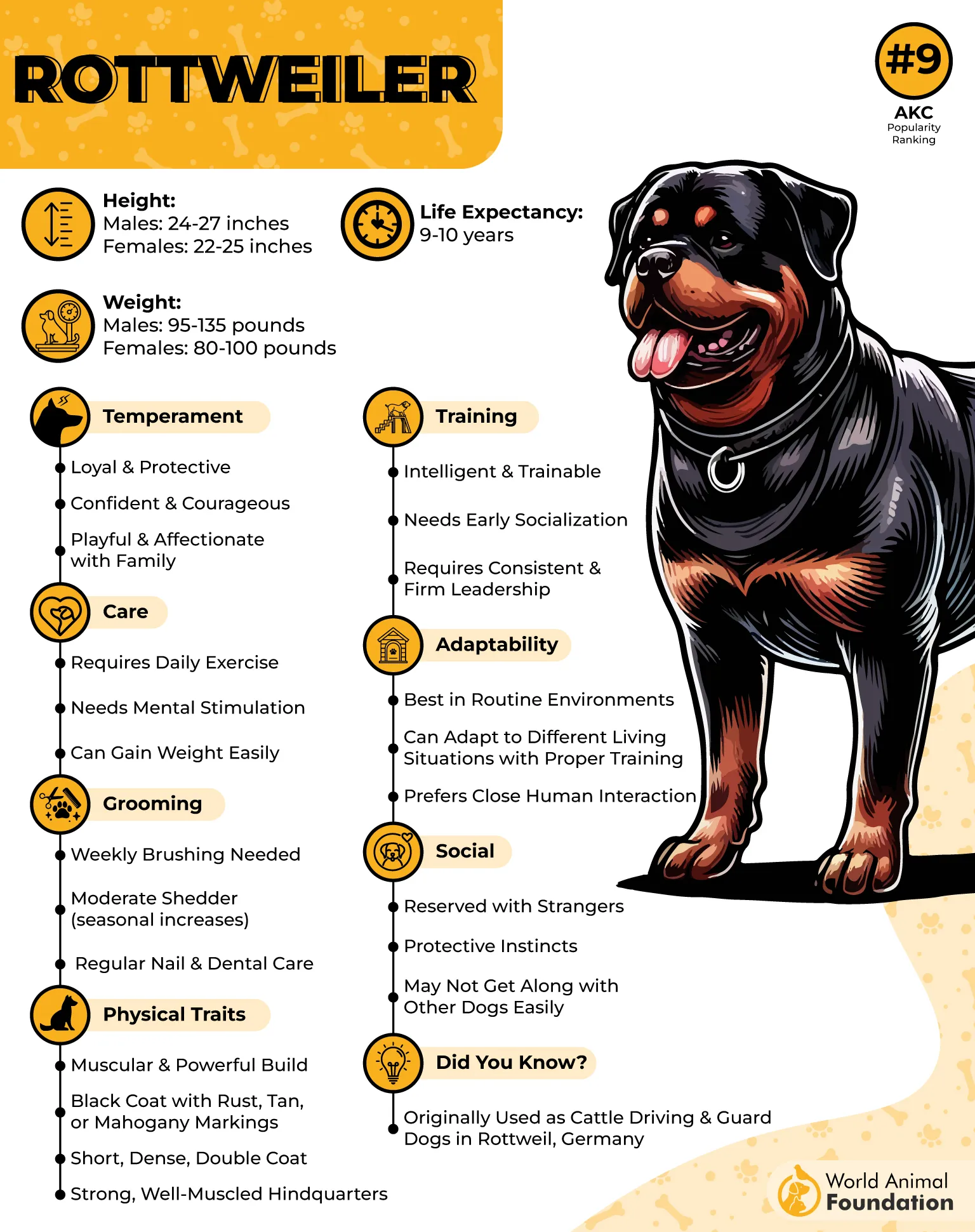
But like any good hero in a comeback movie, they rose again — this time as police, military, and even therapy dogs. According to Britannica, Rotties are striking animals — all blocky heads, broad chests, and quiet confidence.
Their bite force of 328 PSI earns them the silver medal for jaw power, and they unfortunately rank second in fatal dog attacks (with 45 recorded). Not exactly the stat you want on your résumé, but again — that’s more about poor handling than bad temperament.
See, Rottweilers are brilliant and loyal, but also a little bossy. They learn fast — when they want to. Tell a Rottie to “sit” and they’ll look at you like, “Why though? Convince me.” Early training and firm-but-loving leadership are key. Without structure, a bored Rottie can turn into a one-dog demolition crew.
3. German Shepherd

Average Bite Force: 240 PSI
If dogs had résumés, the German Shepherds would be an absolute flex.
Military experience? Check.
Law enforcement background? Double check.
According to the American Kennel Club (AKC), there are countless reasons why German Shepherds reign among the noblest of dog breeds. These dogs are the go-to for police, the military, and search-and-rescue work worldwide.
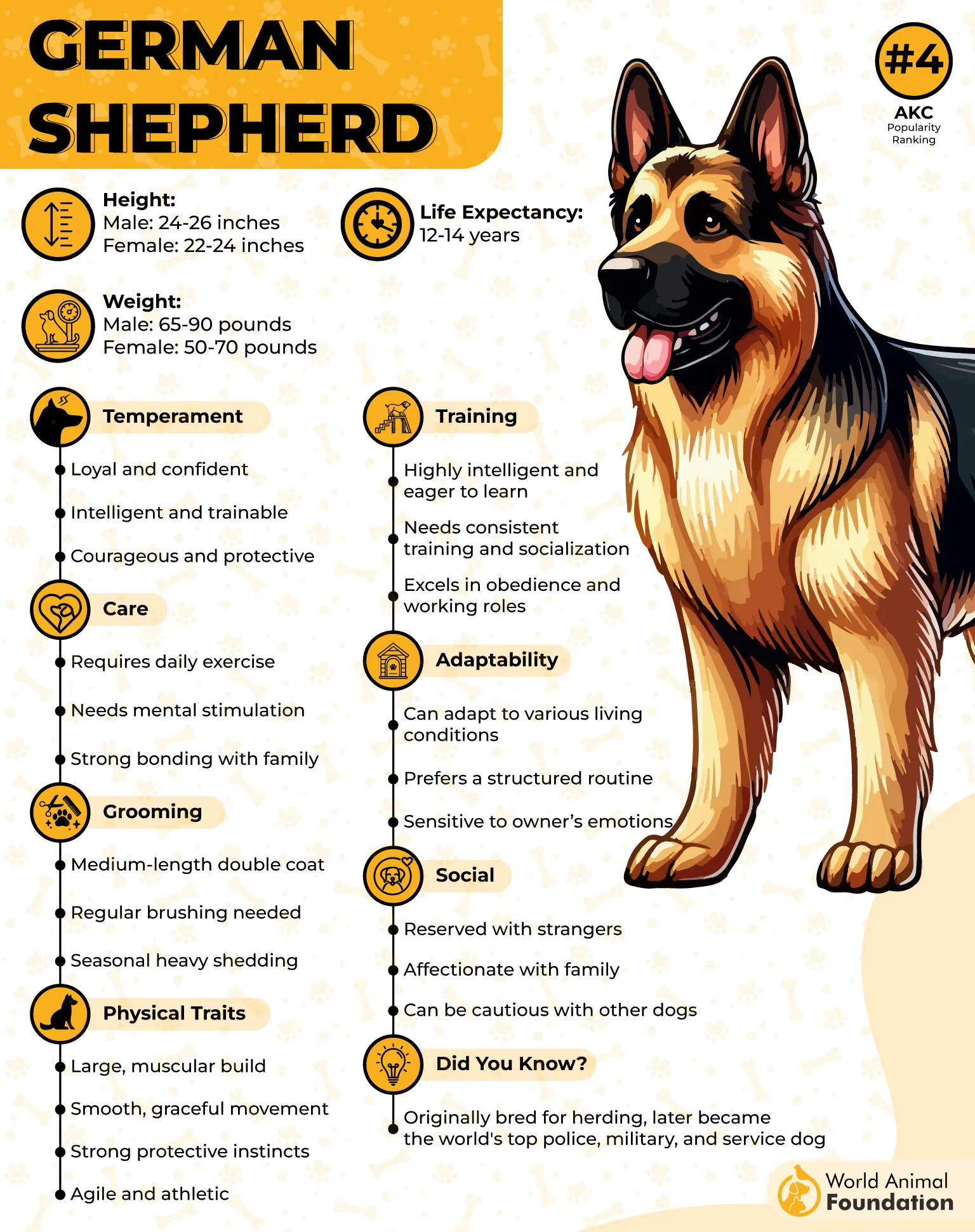
But don’t be fooled by their professional demeanor — German Shepherds also make amazing family pets when properly trained and socialized. They’re loyal to the core, protective of their people, and would gladly take on a grizzly bear if it even looked at you funny.
With a bite force of about 240 PSI, the Shepherd can certainly handle itself if things go sideways. And yes, sometimes their line of duty does involve, uh, “strategic nibbling” on humans — usually the bad kind.
Despite their tough exterior, Shepherds are actually sensitive souls. They thrive on companionship, consistency, and feeling like part of the team. Leave one alone too long, and they might start “redecorating” your house — with your shoes.
Whether guarding your home, finding lost hikers, or herding your toddlers back inside, this breed is all business — with a heart of gold under all that fur.
4. Doberman Pinscher
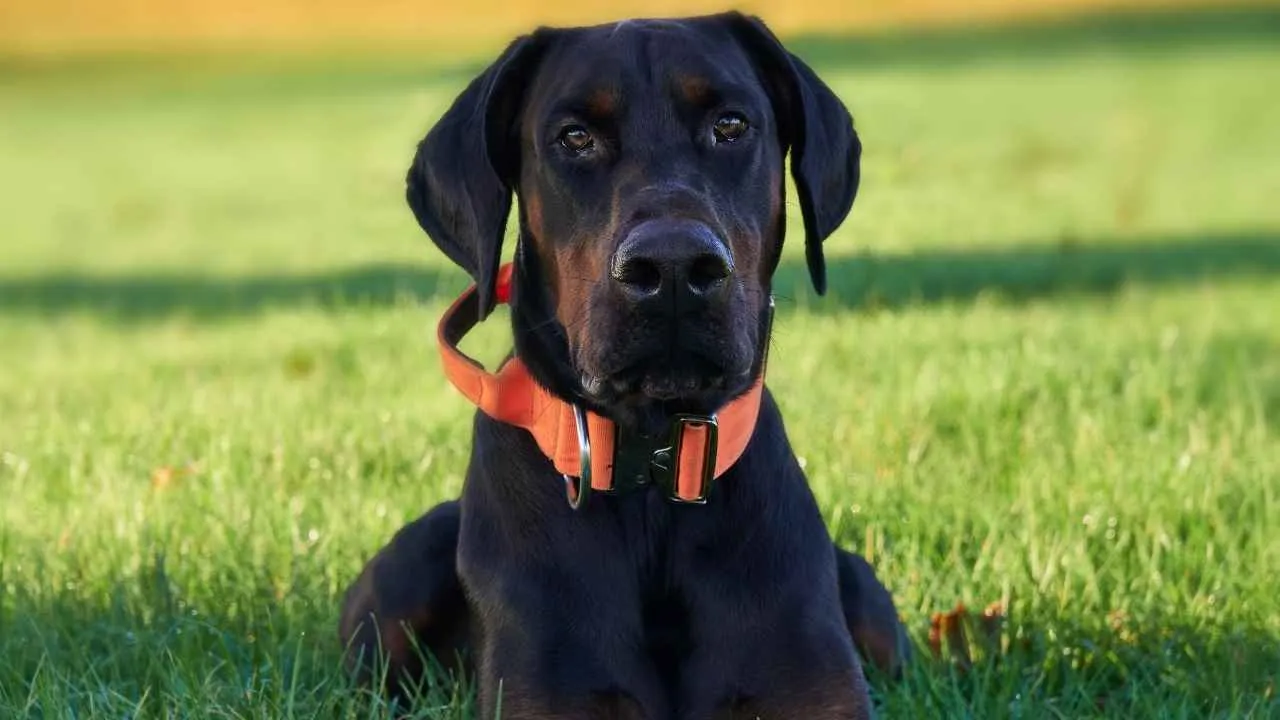
Average Bite Force: 230 PSI
The Doberman Pinscher looks like it was designed by someone who wanted a dog and a bodyguard all in one sleek, black-and-tan package. With their pointed ears, muscular frame, and intense “don’t mess with me” gaze, Dobermans don’t just walk into a room — they command it.
But here’s a fun bit of history: this massive dog wasn’t bred for police work or the military (at least, not at first). Nope — this confident canine’s original job was to escort a 19th-century German tax collector on his rounds. That’s right.
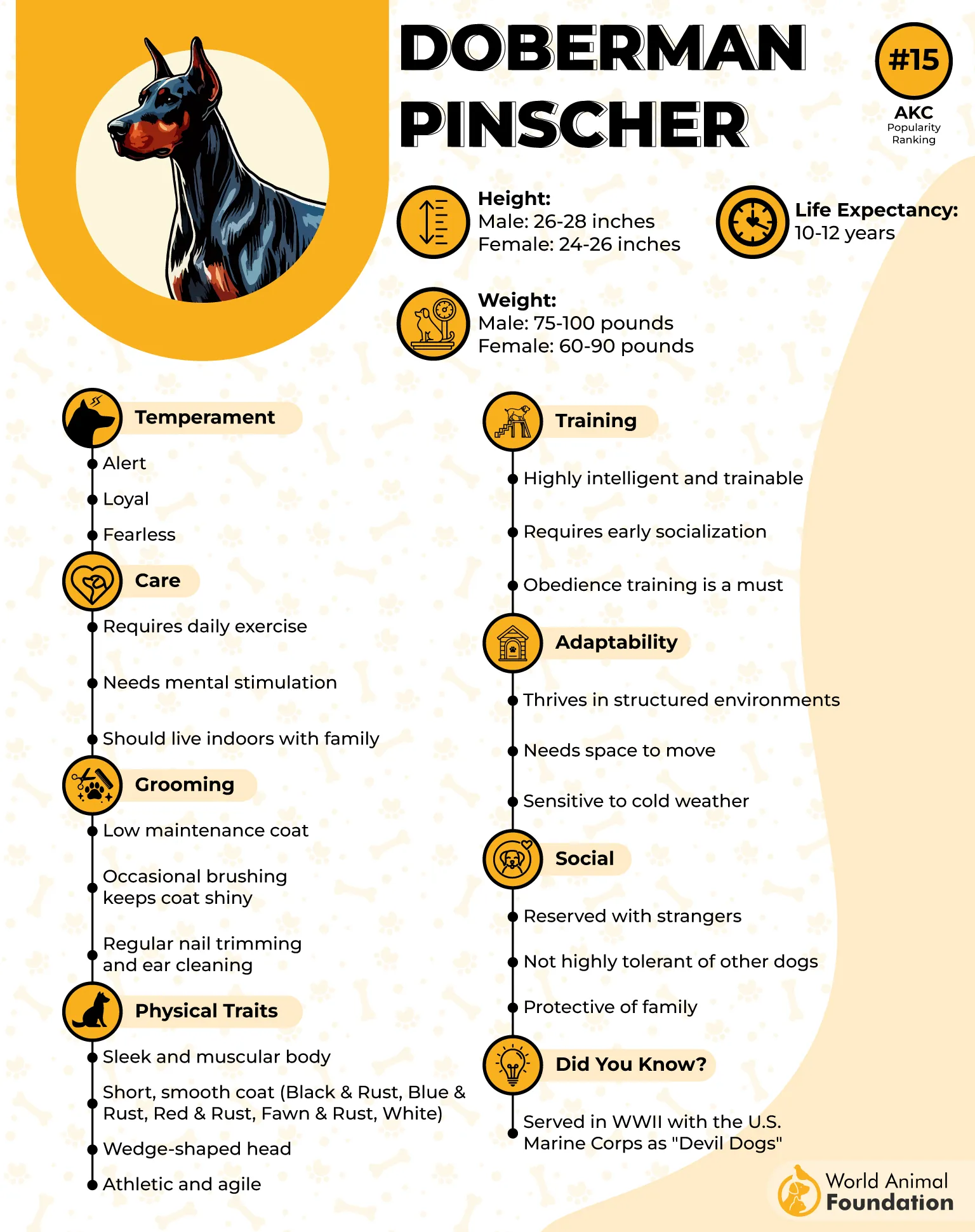
These powerful dogs were bred to help a guy collect money from angry townsfolk. So, if you think your job is stressful, imagine needing a personal dog-shaped security guard just to do your taxes.
They’re intelligent, fast, and fearless — basically, the Ferraris of the dog world. It’s no surprise they occasionally pop up in statistics for fatal dog attacks, but as with most breeds on that list, training and environment play a huge role.
These dogs are affectionate with family, loyal to the bone, and tend to pick a favorite human (congrats, you’re the chosen one). But they’re also naturally wary of strangers, which can make them seem standoffish.
Their mix of brains, bravery, and beauty makes them one of the most respected (and slightly intimidating) breeds out there.
5. Bullmastiff

Average Bite Force: 552 PSI
Meet the Bullmastiff — the gentle giant who looks like they could take down a burglar… and then snuggle with you on the couch afterward. This dog is basically a perfect blend of muscle and mush, bred to protect but also to love.
Originally developed in 19th-century England, Bullmastiffs were nicknamed the “Gamekeeper’s Night Dog.” Their job? Catch poachers sneaking onto estates — preferably without mauling them. (Talk about restraint!)

That’s why they were bred to be powerful enough to stop intruders, but calm enough to hold them until help arrived. Imagine being a thief and realizing your worst nightmare is not the police — it’s a 130-pound dog sitting on your chest.
Their strong protective instincts make early socialization and consistent training essential. Think of it like this: you don’t want a 120-pound bodyguard who decides the mailman is an invader. Training helps them understand that not every knock on the door is a declaration of war.
Give them good training, plenty of affection, and a soft spot to nap, and you’ll have a fiercely loyal companion who’s equal parts guardian angel and drooly teddy bear.
6. Alaskan Malamute
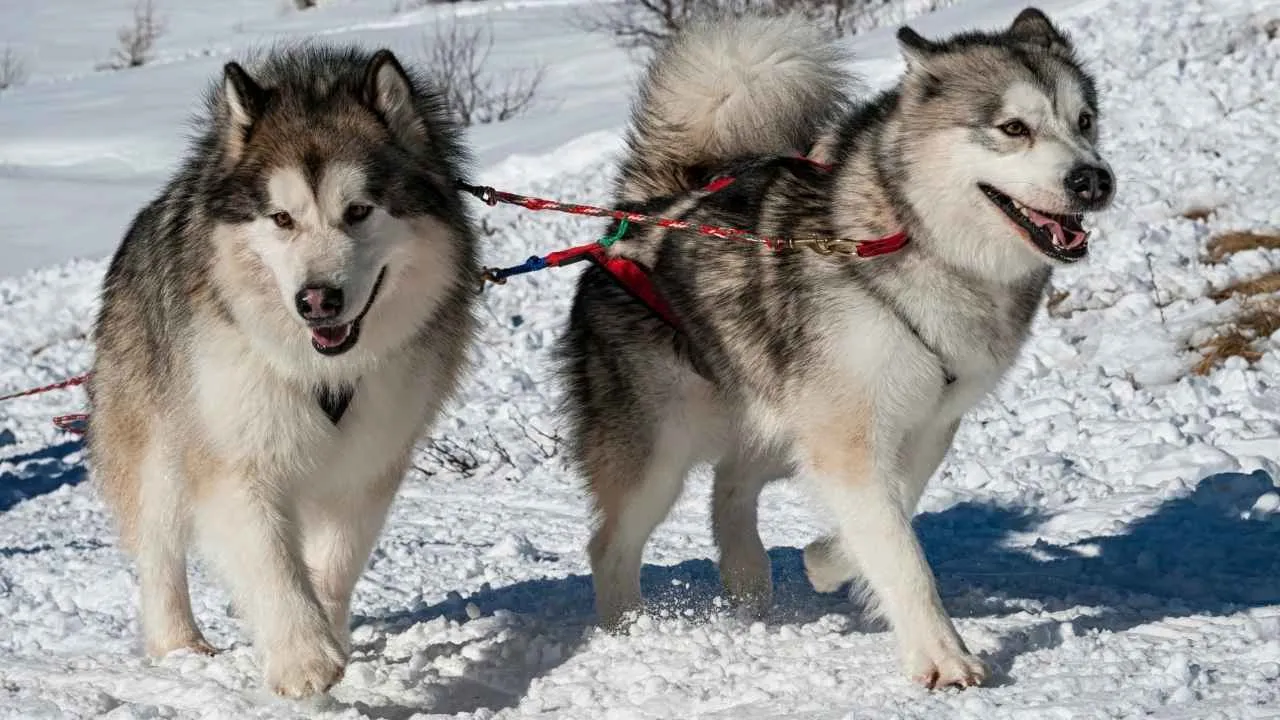
Average Bite Force: 400 PSI
The Alaskan Malamute is basically the snow warrior of the dog world — majestic, fluffy, and strong enough to pull a sled through blizzards while still looking fabulous doing it.
Originally bred by the Mahlemut Inuit tribe in Alaska, these dogs were designed for endurance, not speed. They hauled heavy loads, endured freezing temperatures, and worked side by side with humans long before heated blankets were a thing.
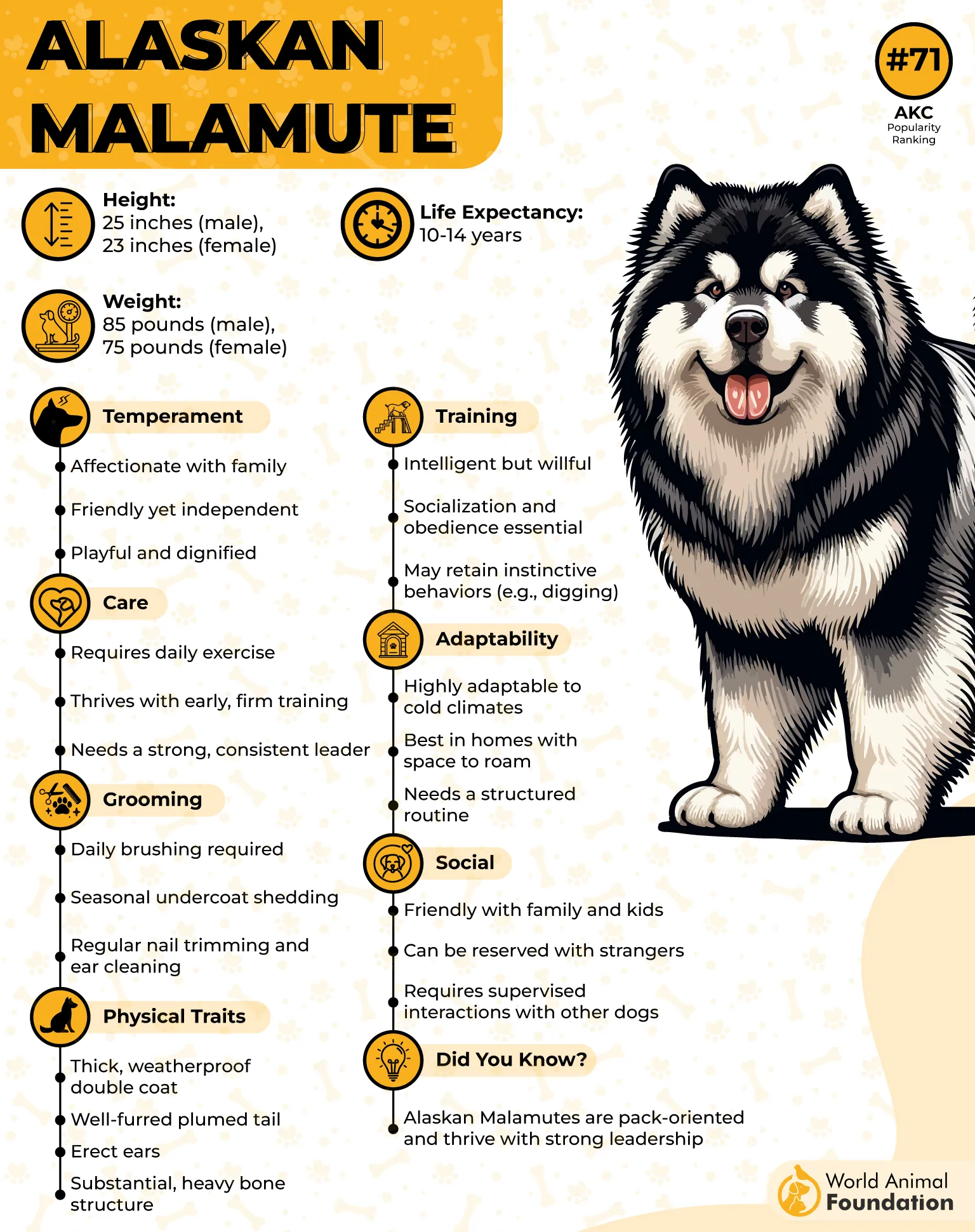
With a bite force of about 400 PSI, this dog means business. Their jaws were built to gnaw through ice, bone, and probably your snow boots if you forget to feed them on time. They don’t have naturally aggressive behavior, but they’re independent and strong-willed — qualities that make them excellent working dogs, but a handful for new owners.
Malamutes are pack animals to their core. They love being part of a family and don’t do well being left alone — boredom can lead to creative (read: destructive) redecorating projects. They’re known to dig, howl, and occasionally “argue” with their humans in hilarious vocalizations that sound suspiciously like complaints.
That said, early training and socialization are key. Their intelligence and stubborn streak mean they’ll test your patience — and your authority — if you’re not consistent.
7. Siberian Husky

Average Bite Force: 320 PSI
Ah, the Siberian Husky — the dog that looks like it walked straight out of a snow-covered fairy tale, complete with ice-blue eyes and a personality that’s 50% athlete, 50% drama queen.
At first glance, it might seem odd to see Huskies on a list of “dangerous” dogs. After all, they look more like Instagram models than guard dogs. Huskies are bundles of energy wrapped in fur — born to run, howl, and stir up a little chaos wherever they go.
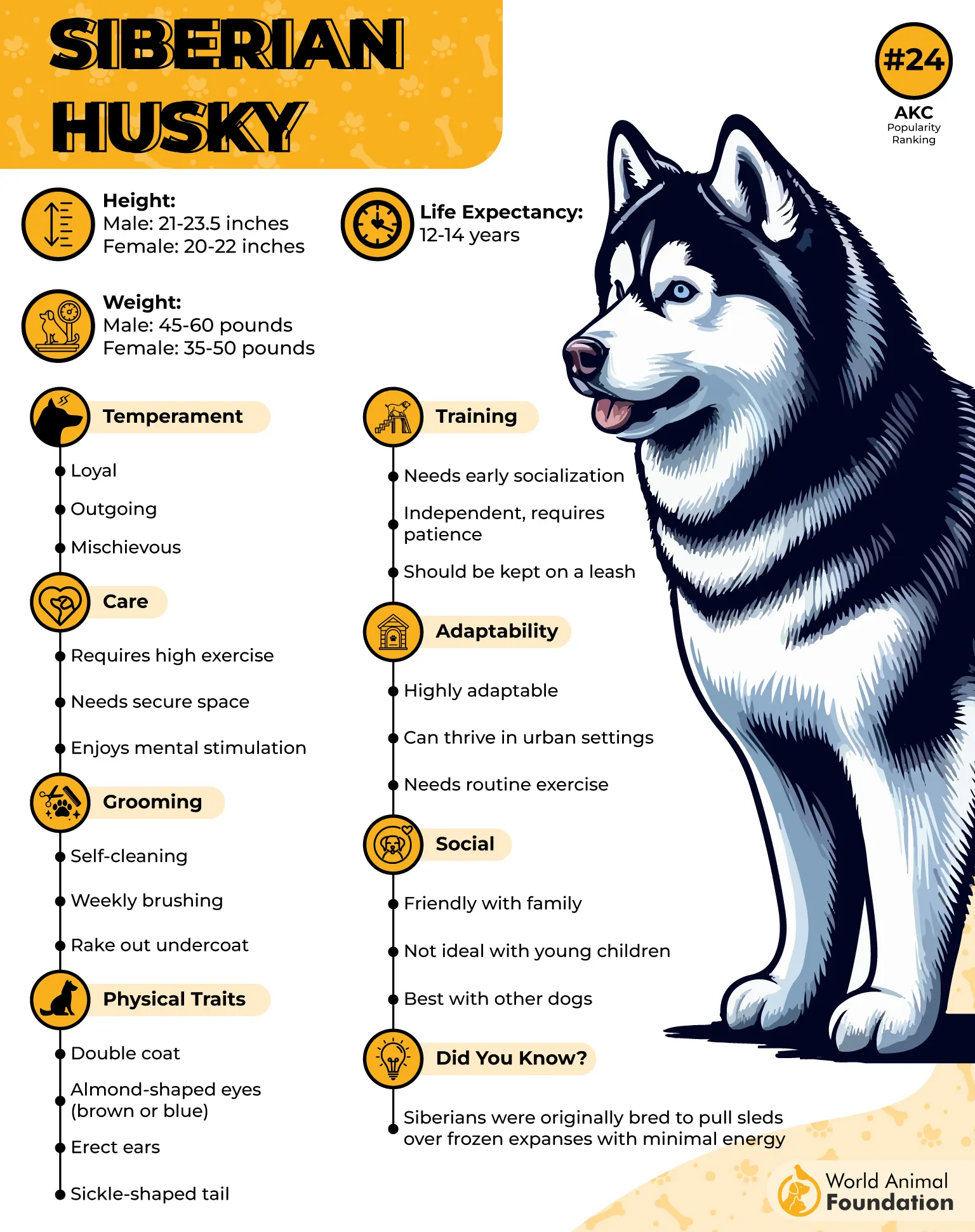
While they’re not typically aggressive, Huskies are intense, high-drive dogs. They play rough, run hard, and occasionally forget that humans are a bit more fragile than their sled-pulling buddies. A tussle that’s all fun and games in a pack of Huskies can feel a little less fun if you’re the one being wrestled.
The key to a happy Husky? Exercise, training, and mental stimulation. Lots of it. A bored Husky will find ways to entertain themselves — usually involving your shoes, garden, or brand-new couch.
So yes, they might have a 320 PSI bite, but you’re far more likely to be “attacked” by a flurry of kisses, flying fur, and the occasional zoomie tornado. The only real danger a Husky poses? Falling hopelessly in love — right before they dig a hole the size of a crater in your backyard.
8. Chow Chow
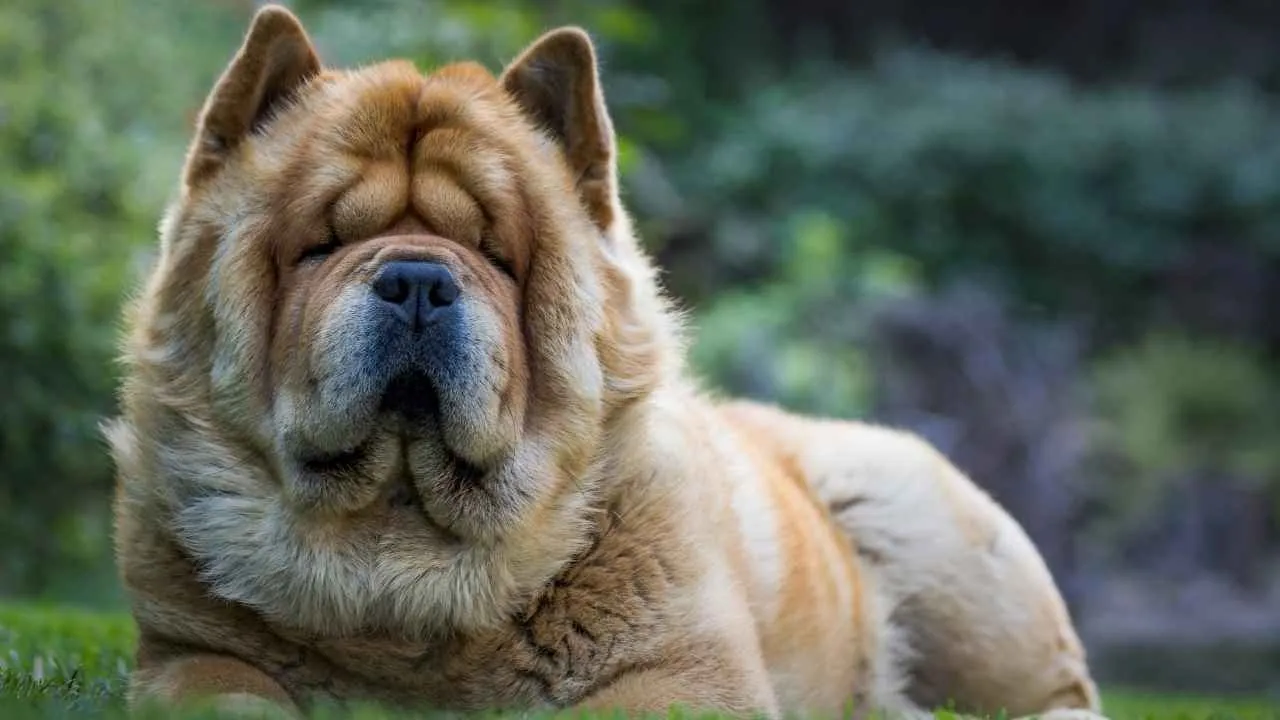
Average Bite Force: 220 PSI
Meet the Chow Chow — the dog that looks like a living stuffed animal but carries the soul of an ancient emperor. With their lion-like mane, fluffy coat, and blue-black tongue, Chows are one of the most distinctive — and misunderstood — breeds out there.
The Chow Chow’s roots stretch back thousands of years to ancient China, where they served as guard dogs, hunters, and even imperial companions.

Here’s the twist: while their teddy bear looks make people want to run up and snuggle them, most Chows are thinking, “Excuse me, who gave you permission to touch the fur?” They’re not mean — just independent and reserved, much like cats.
Unfortunately, that calm, quiet demeanor can be misunderstood. The Chow Chow appears often in bite injury statistics, not because they’re naturally aggressive, but because strangers tend to mistake their fluff for friendliness. Pro tip: if a Chow doesn’t approach you first, it’s best to admire from afar.
Early socialization and training are key — a well-raised Chow can be loyal, gentle, and affectionate with their family, though they’ll always have a regal sense of “I love you, but I’m still in charge.”
9. Cane Corso
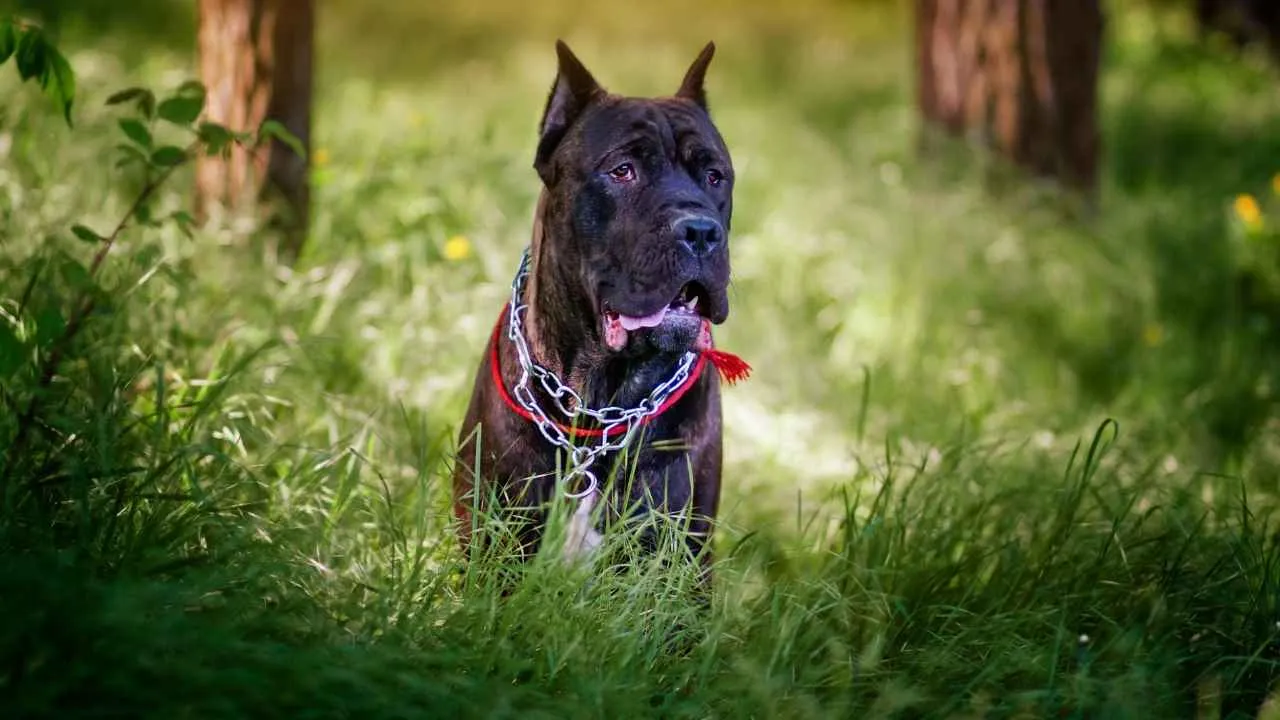
Average Bite Force: 700 PSI
The Cane Corso (pronounced KAH-neh KOR-so) is what happens when elegance meets intimidation. Picture a Roman gladiator in dog form — massive, muscular, and majestically calm… until you give them a reason not to be.
Descended from ancient Roman war dogs, the Cane Corso was bred to guard property, hunt big game, and look fear in the face without flinching. The name itself roughly translates to “guardian dog,” and trust us — they take that job description very seriously.
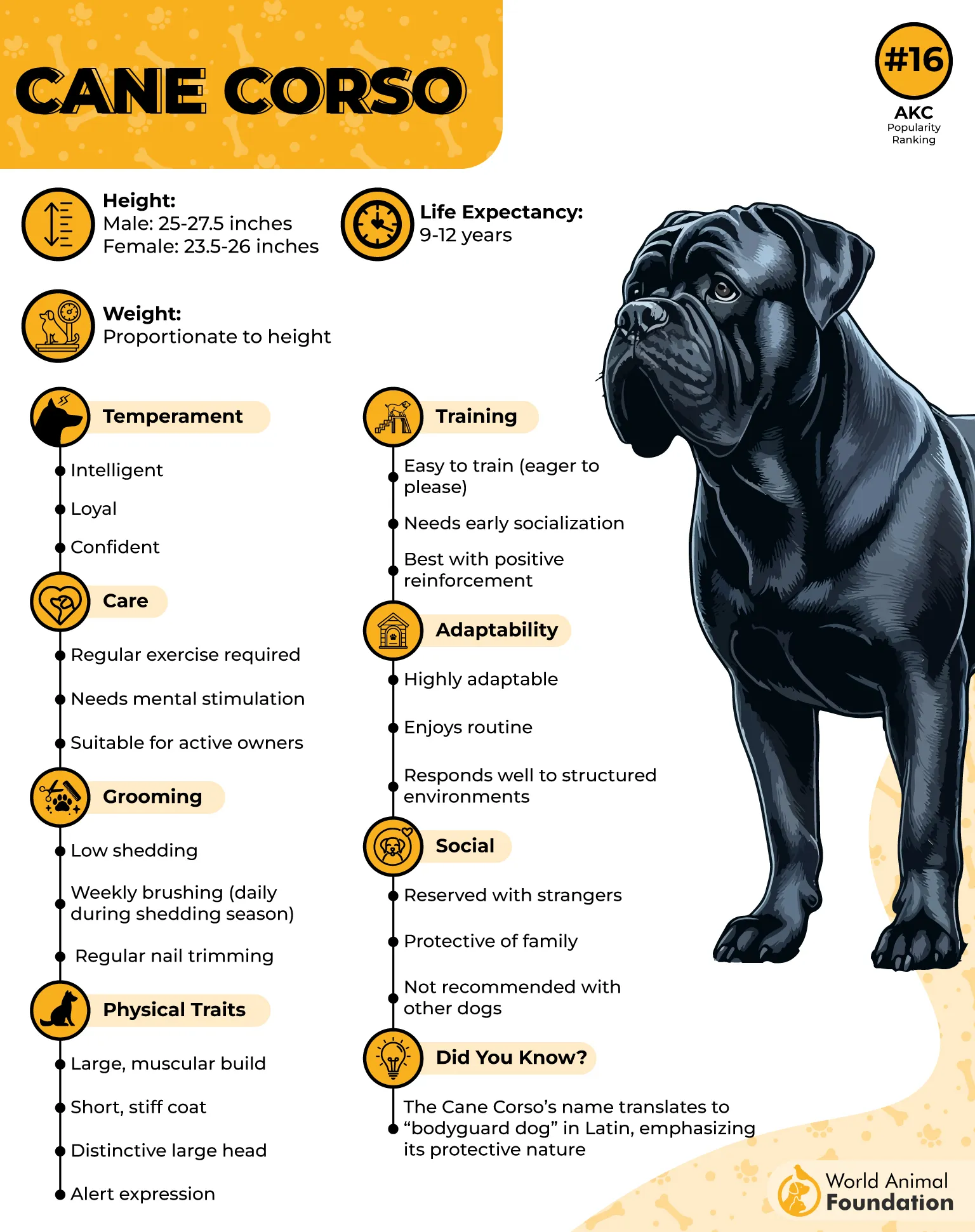
Cane Corso holds one of the strongest jaws in the entire canine kingdom. This breed’s combination of size, strength, and confidence makes it a powerhouse protector. Their large skull and muscular build only add to the intimidation factor — they’re basically living security systems with fur.
The Cane Corso has a strong prey drive and a natural instinct to defend what’s theirs. Without proper socialization and consistent training from an early age, that protective nature can turn into territorial aggression — especially toward strangers.
Cane Corso becomes less of a “dangerous dog” and more of a majestic protector — powerful, poised, and always watching the door for anything that doesn’t belong.
10. Presa Canario

Average Bite Force: 540 PSI
This powerful pooch hails from the Canary Islands, where it was originally bred to work with livestock — herding cattle, guarding farms, and occasionally staring down intruders with a look that says, “You sure about that?”
The name “Presa Canario” literally means “Canarian Catch Dog,” which tells you almost everything you need to know. These dogs were bred to hold and control large, stubborn animals — and yes, they still have that same determination (and jaw power) today.
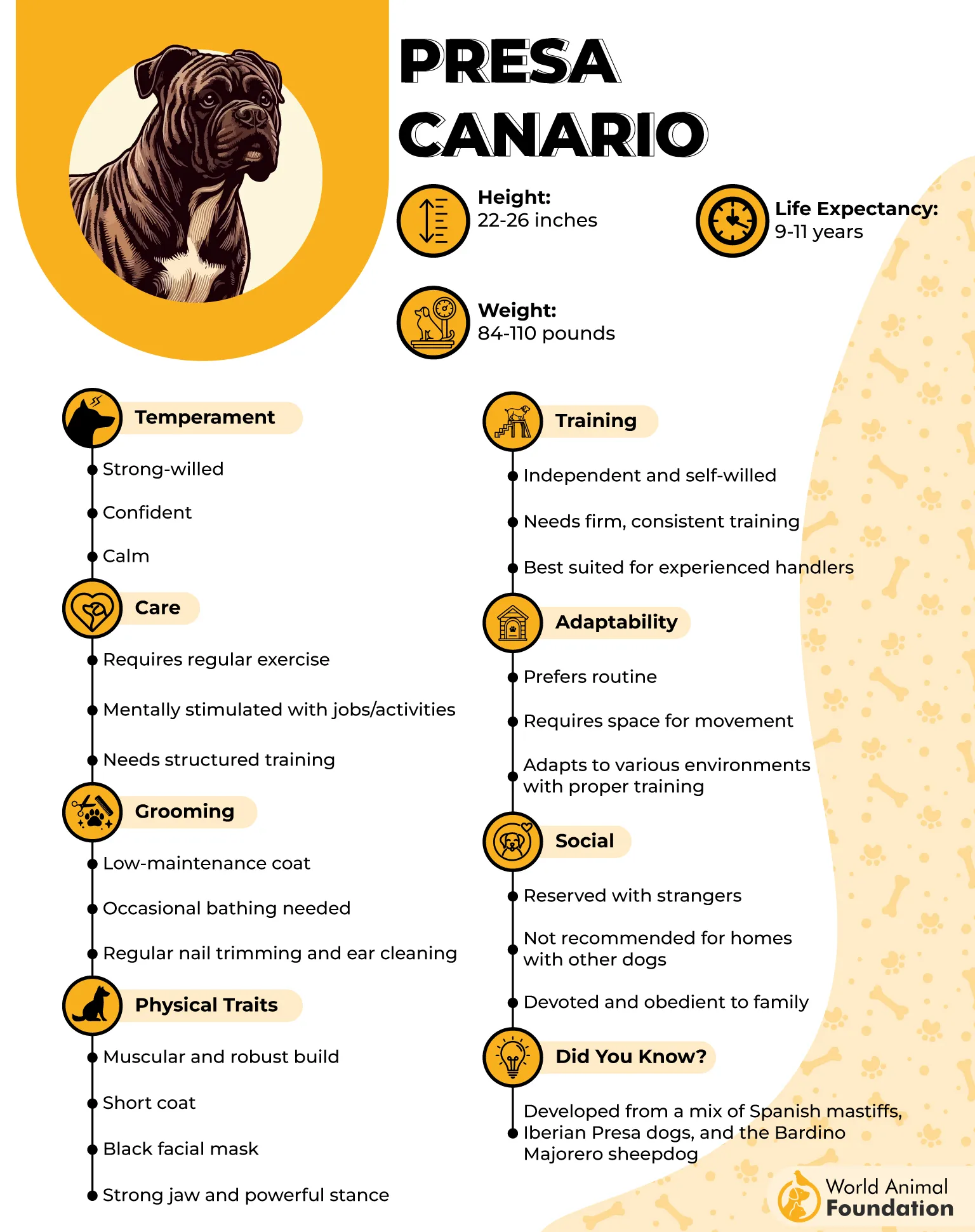
The Presa Canario’s massive build, confidence, and calm intensity make it both impressive and intimidating. They’re not loud or erratic — in fact, they’re often quite composed. But when they decide to act, they move with lightning speed and total conviction. You don’t want to be on the wrong end of that decision.
Like many guardian breeds, Presas are incredibly loyal to their families and can be total lovebugs at home — affectionate, gentle, and even goofy with those they trust. But to strangers? Let’s just say they prefer to take a few minutes (or hours) to decide if you’re worthy of friendship.
This is not a breed you “own”; it’s a breed you earn. So, admire that beautiful brindle coat and powerful stance — just maybe from a respectful distance unless invited closer.
Conclusion
Dog bite injuries are more common than many realize, often involving the most dangerous dog breeds and aggressive breeds that need experienced dog owners. Certain breeds like the American Bulldog, German Shepherd, Great Dane, and wolf hybrids have strong instincts and strong bites, making them extremely dangerous without the right training. Even friendly dogs like Labrador Retrievers or Golden Retrievers can cause harm in the wrong situations, especially around small children or smaller animals.
Some herding dogs and protection dogs, bred for control and defense, may react poorly to unfamiliar people or other pets. Over a decade of studies show that large-bodied dogs are often involved in personal injury cases, though most owners agree that behavior depends on upbringing, not just the same breed. While some dogs are well-suited for families, others need firm guidance and responsible handling. If you’ve suffered from a dog-related injury or attack, understanding these risks—and seeking a free consultation—can help protect both you and other animals in your community.


